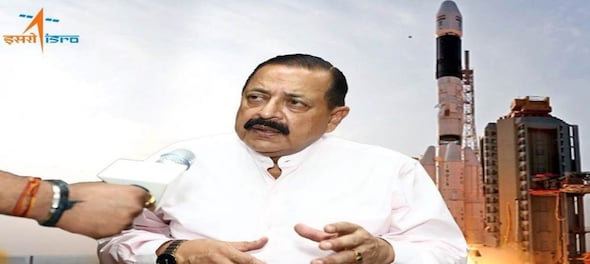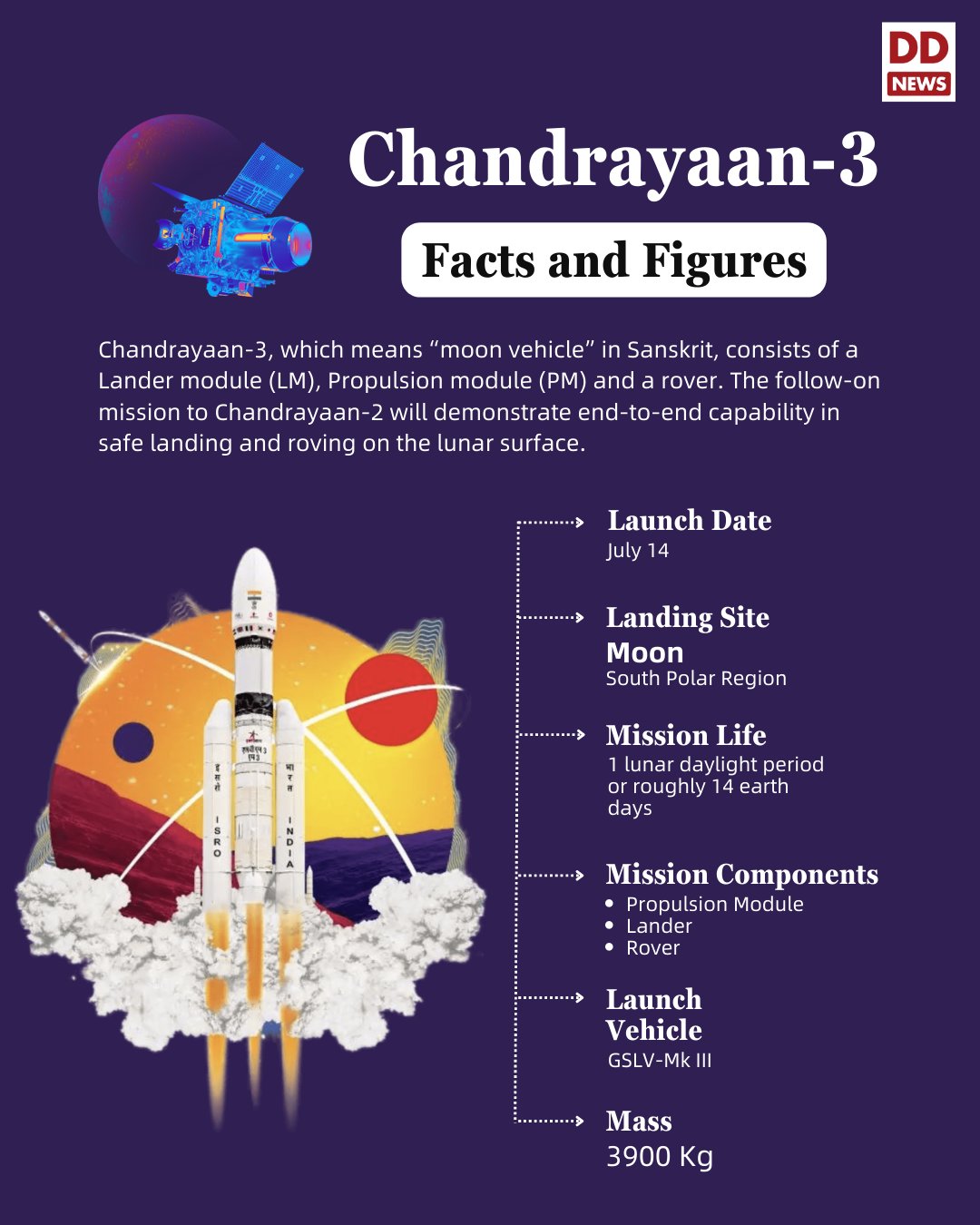
Chandrayaan-3, India's ambitious lunar mission, is scheduled to be launched from the Satish Dhawan Space Centre in Sriharikota on July 14, making India the fourth country to achieve the remarkable feat of landing a spacecraft on the surface of the Moon.
Union Minister of State for Science and Technology, Jitendra Singh, made the announcement on Sunday and credited India's space expertise to Prime Minister Narendra Modi and the role he played in fostering international space collaborations during his recent visit to the United States.
Singh emphasised that India's rapid advancements in space technology under the leadership of Prime Minister Modi have propelled the nation to the forefront of lunar exploration.
"India can no longer wait to be left behind in its march to the Moon," he stated, underscoring the urgency and determination behind the mission.
Chandrayaan-3 is a continuation of India's previous lunar mission, Chandrayaan-2, with the objective of demonstrating India's expertise in soft landing and roving on the lunar surface.
Singh explained that the mission's intricate trajectory required the spacecraft to precisely enter the Moon's orbit, a challenge that has been successfully overcome.
Once Chandrayaan-3 lands on the Moon, its six-wheeled rover will be deployed, expected to operate for a period of 14 days. Equipped with multiple cameras, the rover will capture and transmit images back to Earth, providing valuable insights into the lunar environment.

Singh credited Prime Minister Modi for creating a supportive environment for the country's space scientists and for pioneering groundbreaking decisions such as opening up the space sector for public-private partnerships. He predicted that, based on the current growth trajectory, India's space sector could become a $1 trillion economy in the years to come.
"The primary objectives of Chandrayaan-3 mission are threefold, a) to demonstrate Safe and Soft Landing on Lunar Surface b) to demonstrate Rover roving on the moon and c) to conduct in-situ scientific experiments," Singh explained.
He recalled the groundbreaking discoveries of Chandrayaan-1, the first mission in the series, which revealed the presence of water on the Moon's surface, captivating the global scientific community and even influencing further experiments by renowned space agencies like NASA.
Chandrayaan-3 will be launched using the indigenously developed Launch Vehicle Mark-3 by the Indian Space Research Organisation (ISRO), marking a significant milestone for the nation's space program.
Singh expressed the widespread excitement surrounding the mission, especially following the setback of the Chandrayaan-2 mission, which encountered a technical issue during its descent on September 6, 2019. Prime Minister Modi personally witnessed the event at Sriharikota.
"The Chandrayaan-3 Lander has undergone modifications to enhance its robustness, all of which have been thoroughly tested and simulated," Singh assured.
He further stated that the lander and rover modules of Chandrayaan-3 are equipped with payloads designed to provide valuable data to the scientific community regarding the chemical and elemental composition of lunar soil and rocks.
Facts and figures on Chandrayaan-3:
Chandrayaan-3, which means "moon vehicle" in Sanskrit, consists of a Lander module (LM), Propulsion module (PM) and a rover. The follow-on mission to Chandrayaan-2 will demonstrate end-to-end capability in safe landing and roving on the lunar surface.
Launch date: July 14
Landing site: Moon, South polar region
Mission life: One lunar daylight period or roughly 14 Earth days
Mission components: Propulsion module, lander, rover
Launch vehicle: GSLV-Mk III
Mass: 3,900 kg
With agency inputs.
Check out our in-depth Market Coverage, Business News & get real-time Stock Market Updates on CNBC-TV18. Also, Watch our channels CNBC-TV18, CNBC Awaaz and CNBC Bajar Live on-the-go!


Lok Sabha elections 2024: How much has Smriti Irani's wealth increased in 5 years?
May 2, 2024 1:38 PM
Exclusive | NDA will cross 400 mark before 12:30 pm on June 4, can win all 80 seats in UP, says Amit Shah
May 2, 2024 12:47 PM

